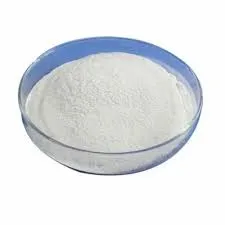
Oct . 11, 2024 12:18 Back to list
Emerging Trends and Insights in the HPMC Market for Future Growth Opportunities
An Overview of the HPMC Market
Hydroxypropyl Methylcellulose (HPMC) has become a significant compound in various industries, gaining attention due to its unique properties and versatility. HPMC is a semi-synthetic polymer derived from cellulose, widely utilized in construction, pharmaceuticals, food, and personal care products. This article explores the current state of the HPMC market, its applications, and the factors driving its growth.
Applications of HPMC
1. Construction Industry The construction sector is one of the largest consumers of HPMC. Due to its water-retention properties, HPMC is extensively used in cement-based products such as tile adhesives, plaster, and joint compounds. It acts as a thickening agent, helping to improve workability and adjust open time, which enhances the application process. Additionally, HPMC contributes to the adhesion and durability of these materials, making it an essential component in modern construction practices.
2. Pharmaceuticals In the pharmaceutical industry, HPMC is employed as an excipient in drug formulations. Its ability to form a gel upon hydration makes it an ideal candidate for controlled-release formulations. HPMC is commonly used in tablets, capsules, and other dosage forms, providing not only binding properties but also improving the stability and bioavailability of active pharmaceutical ingredients.
3. Food Industry HPMC serves various functions in food applications, including as a thickener, stabilizer, and emulsifier. It is utilized in products such as sauces, dressings, and ice creams, where it improves texture and shelf life. The increasing demand for clean-label products has propelled the need for natural and semi-synthetic additives like HPMC, which are perceived as safer options for consumers.
4. Personal Care Products In the cosmetics and personal care sector, HPMC is used in formulations for lotions, creams, and gels. Its film-forming and thickening properties enhance the sensory experience of these products and improve stability. As consumers become more conscious about ingredients, the demand for HPMC in personal care formulations is on the rise, particularly for products marketed as natural or organic.
Market Trends and Growth Drivers
The global HPMC market is witnessing significant growth, driven by several factors
hpmc market

1. Increasing Construction Activities Rapid urbanization and infrastructure development across emerging economies are propelling the demand for construction materials containing HPMC. Governments are investing in large-scale construction projects, which in turn increases the need for high-performance construction chemicals.
2. Pharmaceutical Advancements The pharmaceutical sector is continuously evolving, with a focus on developing innovative drug delivery systems. HPMC’s role in enhancing bioavailability and stability positions it as a crucial ingredient in pharmaceutical formulation, driving its demand in this industry.
3. Health and Wellness Trends The rising trend of health and wellness among consumers is leading to an increased demand for clean-label and natural food products. HPMC aligns with this trend, as it is often favored as a plant-based ingredient that satisfies consumer preferences for healthier options.
4. Sustainability Focus With growing environmental concerns, manufacturers are seeking sustainable and eco-friendly products. HPMC’s derivation from cellulose, a renewable resource, makes it an attractive option for companies aiming to reduce their environmental impact.
Challenges in the HPMC Market
Despite the positive outlook, the HPMC market faces several challenges. The primary concern revolves around the supply chain, particularly regarding the availability of raw materials derived from cellulose. Fluctuating prices of these raw materials can impact production costs. Additionally, competition from alternative additives in various applications poses another challenge, as manufacturers explore cost-effective solutions.
Conclusion
In summary, the HPMC market is on an upward trajectory, fueled by its diverse applications across multiple industries. The compound's unique properties make it indispensable in construction, pharmaceuticals, food, and personal care products. As the global demand for quality, performance, and sustainability continues to grow, HPMC will likely play a pivotal role in meeting consumer expectations. However, stakeholders in the HPMC market must navigate challenges related to raw material supply and competitive pressures to ensure sustained growth and innovation in this dynamic industry.
-
Versatile Hpmc Uses in Different Industries
NewsJun.19,2025
-
Redispersible Powder's Role in Enhancing Durability of Construction Products
NewsJun.19,2025
-
Hydroxyethyl Cellulose Applications Driving Green Industrial Processes
NewsJun.19,2025
-
Exploring Different Redispersible Polymer Powder
NewsJun.19,2025
-
Choosing the Right Mortar Bonding Agent
NewsJun.19,2025
-
Applications and Significance of China Hpmc in Modern Industries
NewsJun.19,2025







